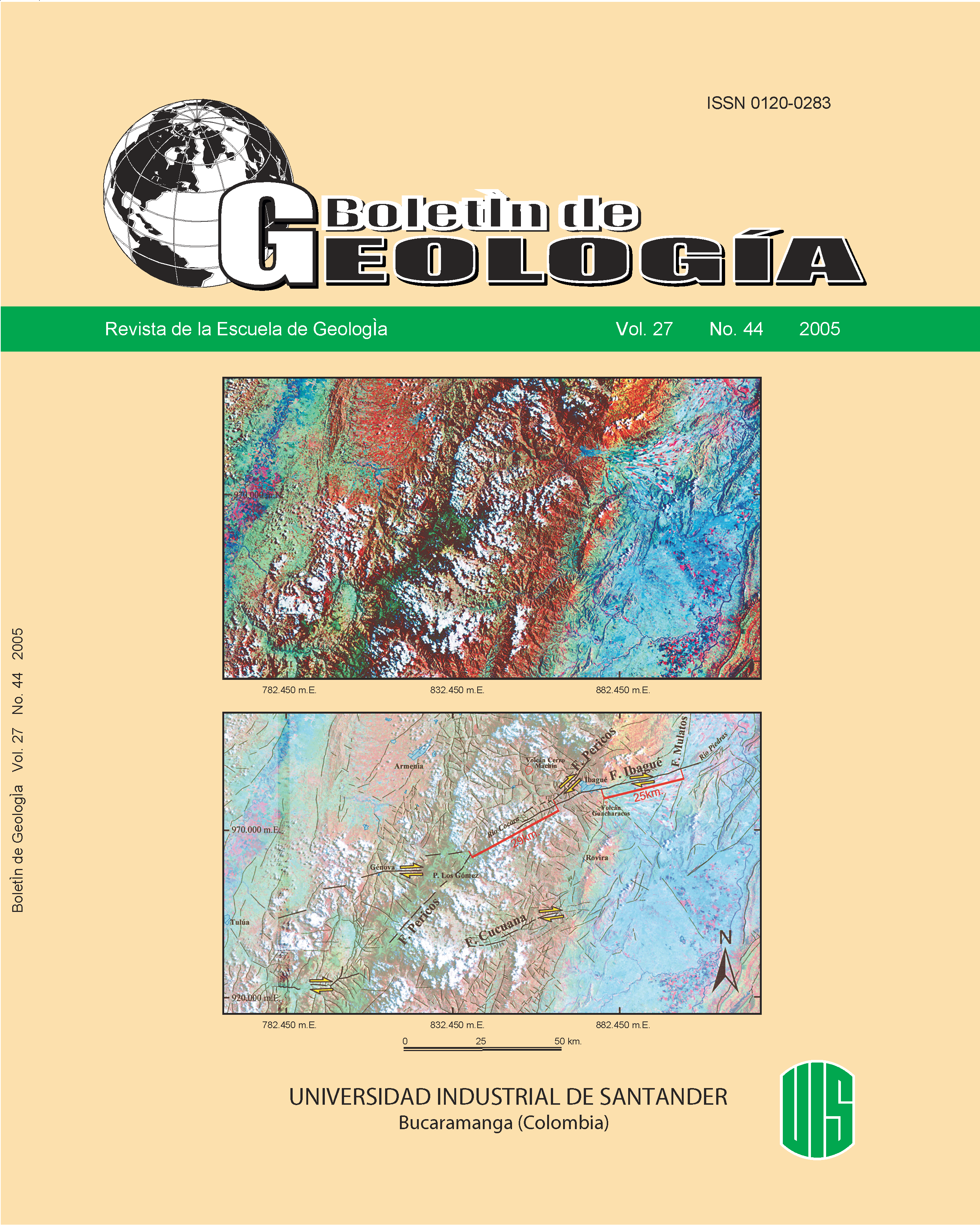Quindio´s earthquake 25 january 1999, morphotectonic and seismological evaluation
Published 2005-01-11
Keywords
- Morphotectonic,
- Focal Mechanism Solutions,
- Pull-apart basin
How to Cite
Abstract
In order to understand the behaviour of the Quindio´s Earthquake 25 January 1999 and its sequence of replicas a morphootectonic (geomorphologic indicators) and seismologic analysis (space-temporal and spectral analysis, ruptura length, focal mechanism solutions and stress tensor) was undertaken. The result suggest that the epicentre area presents an extensional regime down to 10 km depth and compressive between 10 and 25 km depth, forming a negative flower structure. This geometry is interpreted as the result of the lateral traction of the Ibagué Fault over the Romeral Fault System, giving origin to a pull-apart basin in filled by the Glacis del Quindío deposits over the last 5 million years.
Downloads
References
Duran, L. (1987). Geomorfología analítica de perfilesfluviales longitudinales. Revista CIAF. Vol II, t2, No.1/3. pp. 297 - 300
Duque-Caro, H. (1990). The Choco Block in thenorthwestern corner of South America: Structural,tectonostratigraphic, and paleographic implications.Journal of South American Earth Sciences. Vol. 3, No.1, pp. 71-84.
Espinosa, A. (1999). Sismicidad histórica del Quindío(en preparación). Armenia: Universidad del Quindío
González, H. y Núñez, A. (1991). Mapa geológicogeneralizado del Departamento del Quindío. Esc:1:100.000. Bogotá: Ingeominas
Ingeominas, Corpoquindío, Universidad del Quindío,(1999). Estudio de amenaza sísmica en los 26 municipiosdel Eje Cafetero, afectados por el sismo del 25 de enerode 1999. Armenia: Forec, 151p
Keller, E. A., Pinter N. (1996). Active tectonics:earthquakes uplift and landscape. New Jersey: PrenticeHall, 338 p
Lee, W., Lahr, J., (1975). HYPO71. A ComputerProgram for Determining Hypocenter, Magnitud and FirstMotion Pattern of Local earthquakes. U.S. Geol. Surv.Open-file Report75 - 311, 59 p
Lee, W. (1989). Toolbox for seismic data adquisition,processing and analysis. IASPEI Software Library, Vol. 1.McCourt, W et al. (1984). Geología de la CordilleraCentral en el Departamento del Valle del Cauca, Quindíoy NW del Tolima (planchas 243, 261, 280 y 300). Cali:Ingeominas - Misión Británica (British GeologicalSurvey). Reporte 8, inédito, 49 p
Maya, M., González, H. (1995). Unidades litodémicasen la Cordillera Central. Bol. Geol. Ingeominas, Medellín,Vol. 35, No. 23, pp. 43 - 57.Mojica, J. et al. (2001). Geología del flanco occidentalde la Cordillera Central entre Salento, Génova yCaicedonia. Quindío - Valle. Colombia. En: Memoriasdel VIII congreso colombiano de geología. Manizales
Monsalve, H. (2001). El Sismo de Armenia (Colombia)del 25 de Enero de 1999: Un Análisis Telesísmico deOndas de Cuerpo, Observaciones de Campo y AspectosSismotectónicos. Universidad del Quindío. En revisión
Mora, H. et al. (2001). Resultados del uso de GeodesiaSatelital Para Estudios Geodinámicos en Colombia. En:I Simposio Colombiano de Sismología, 15 p
